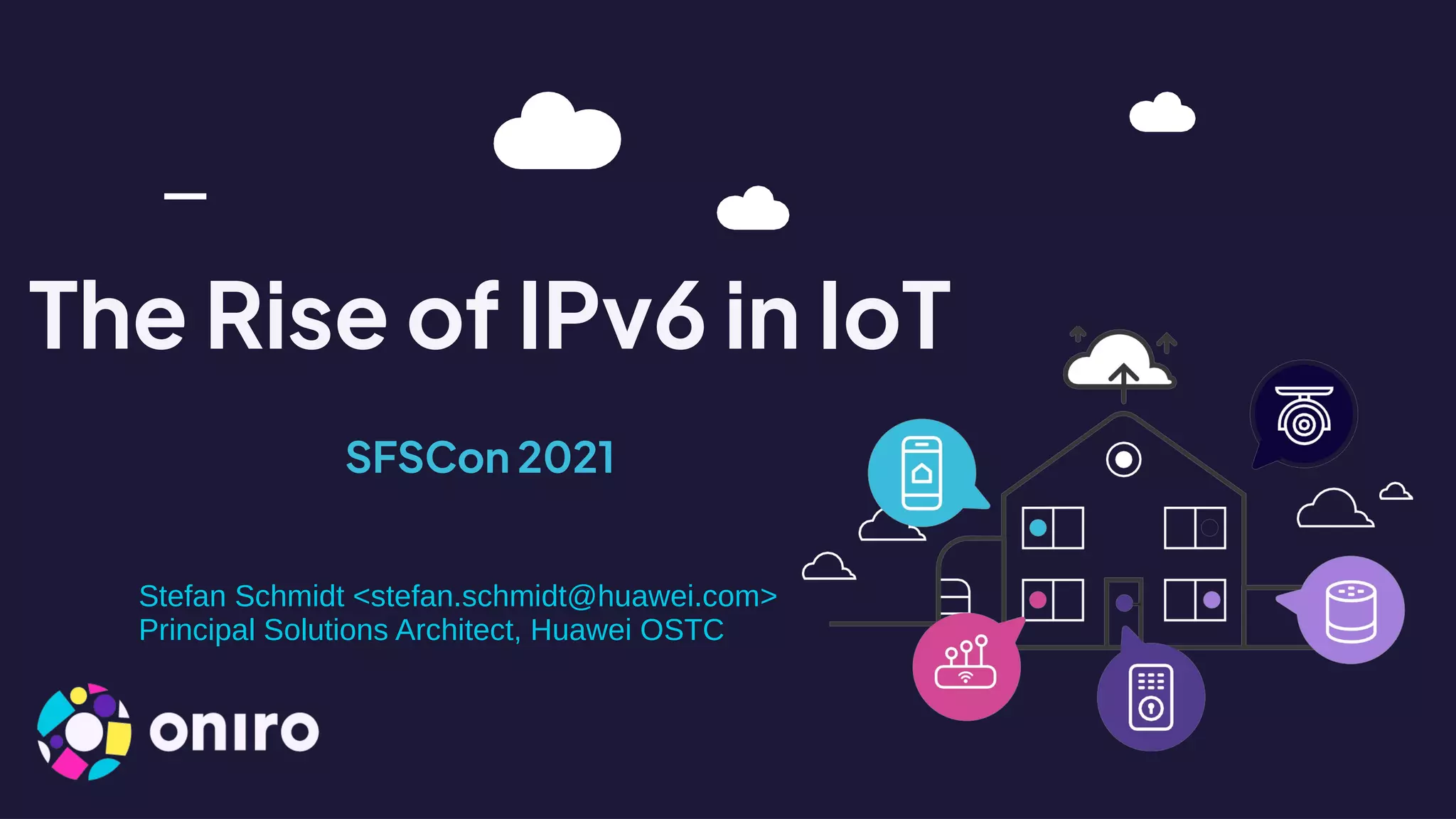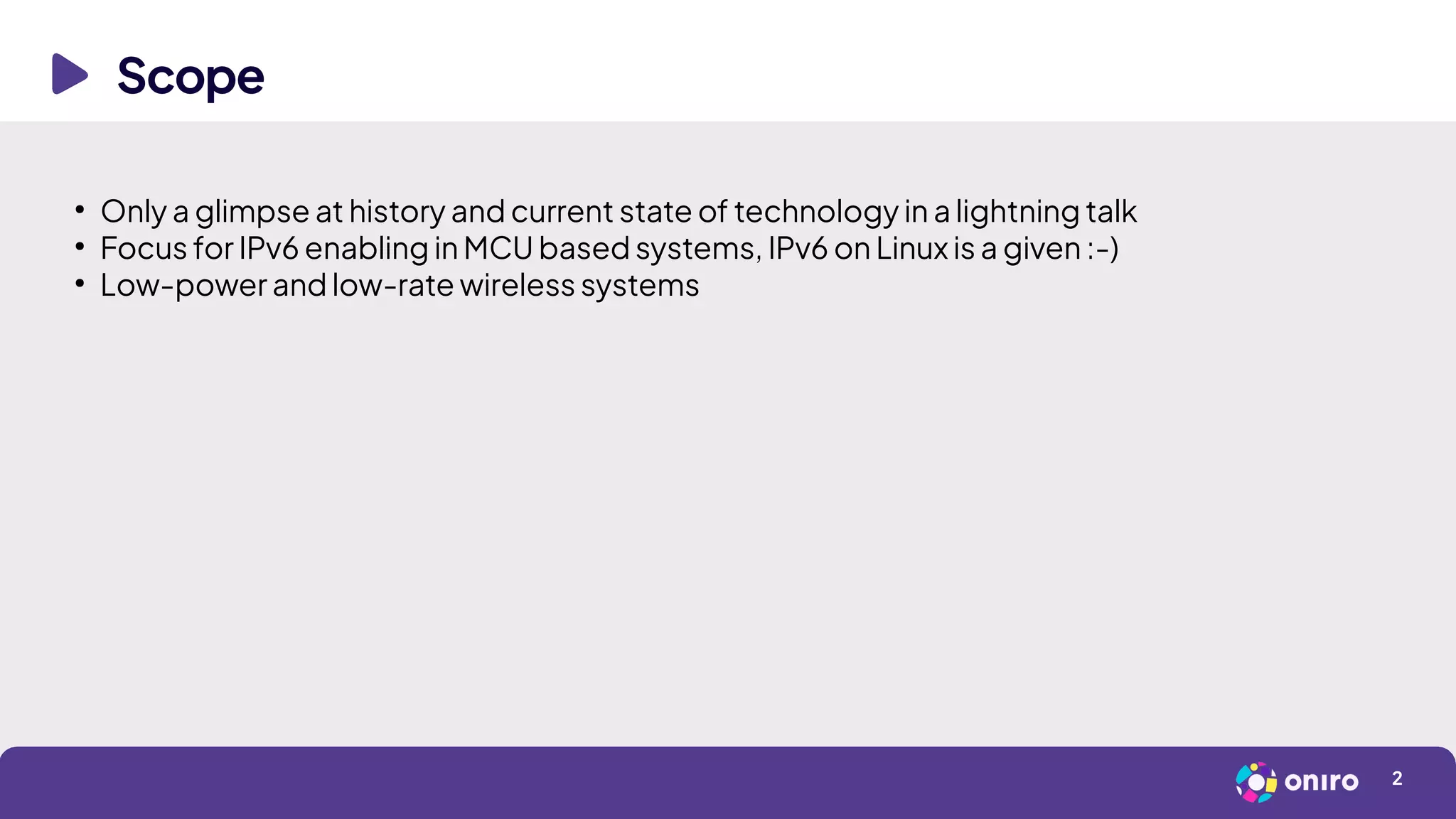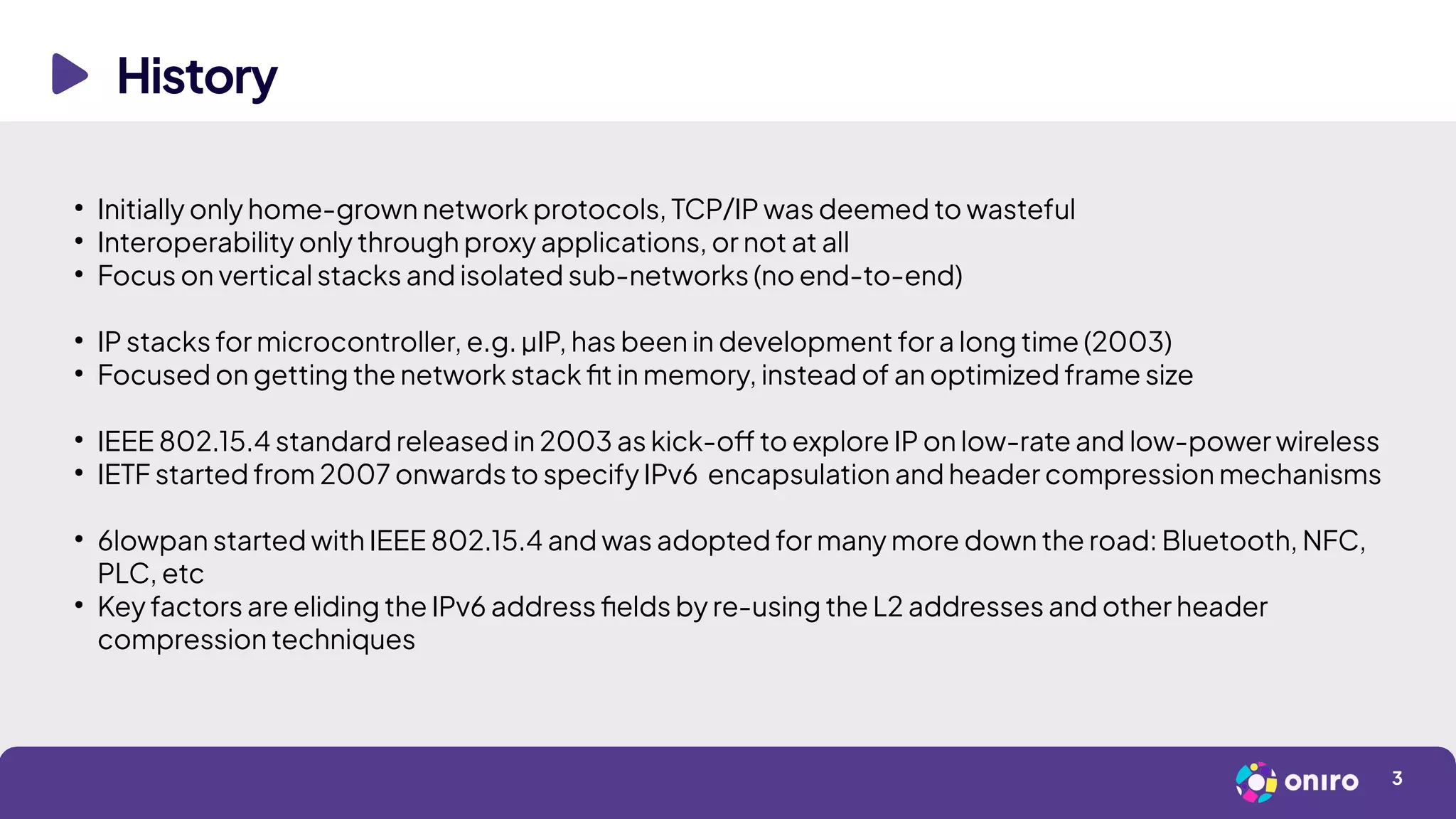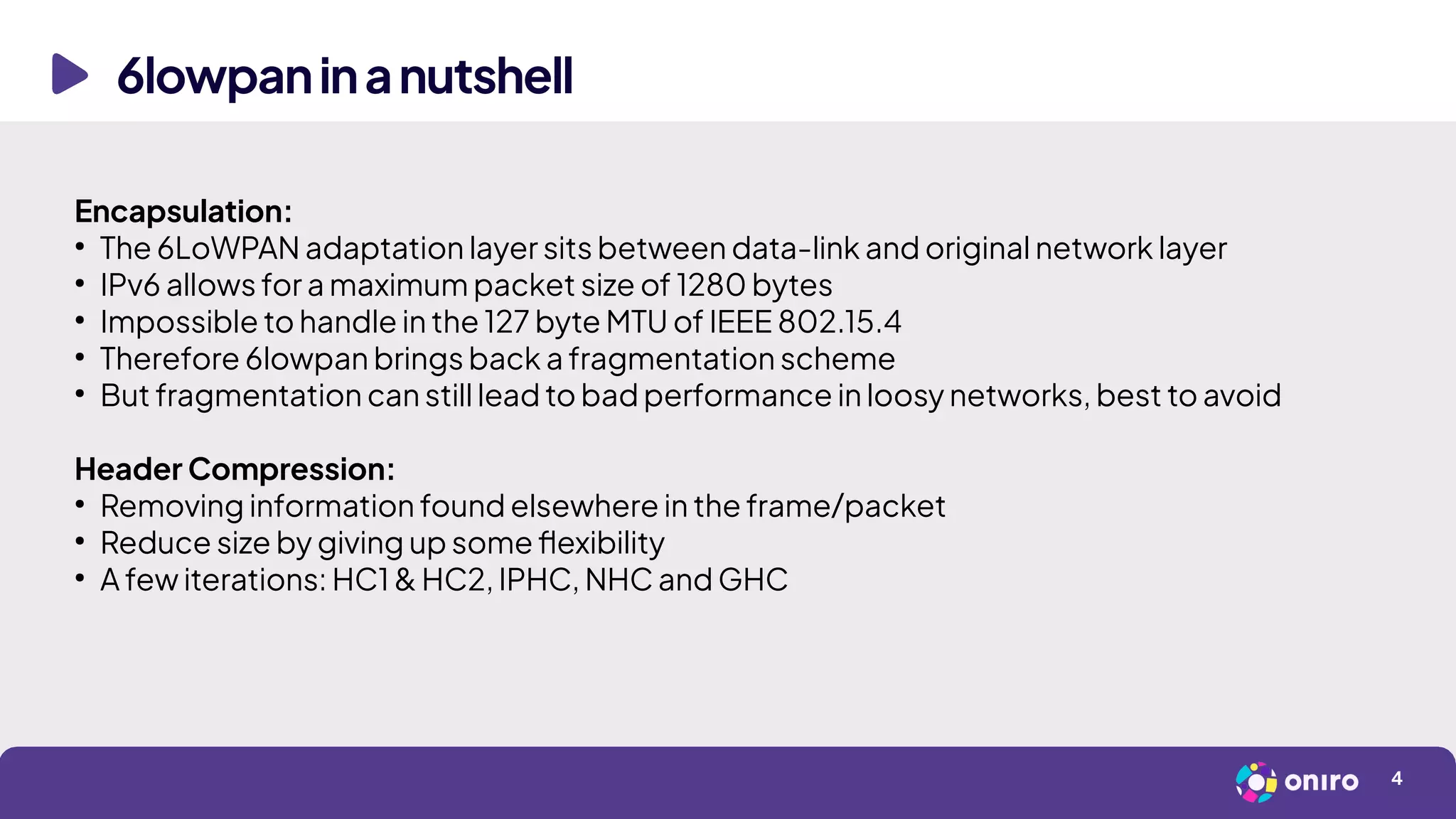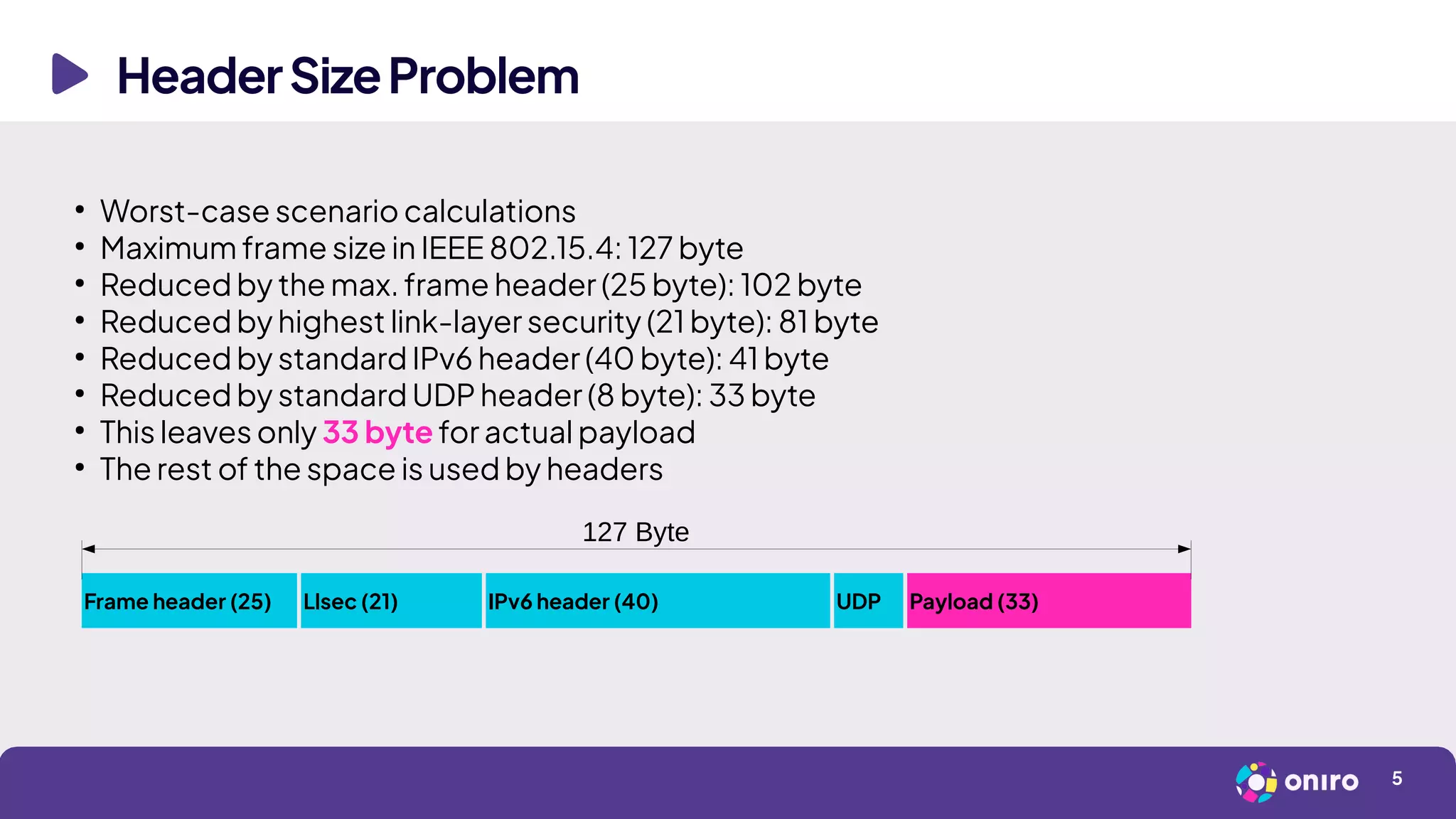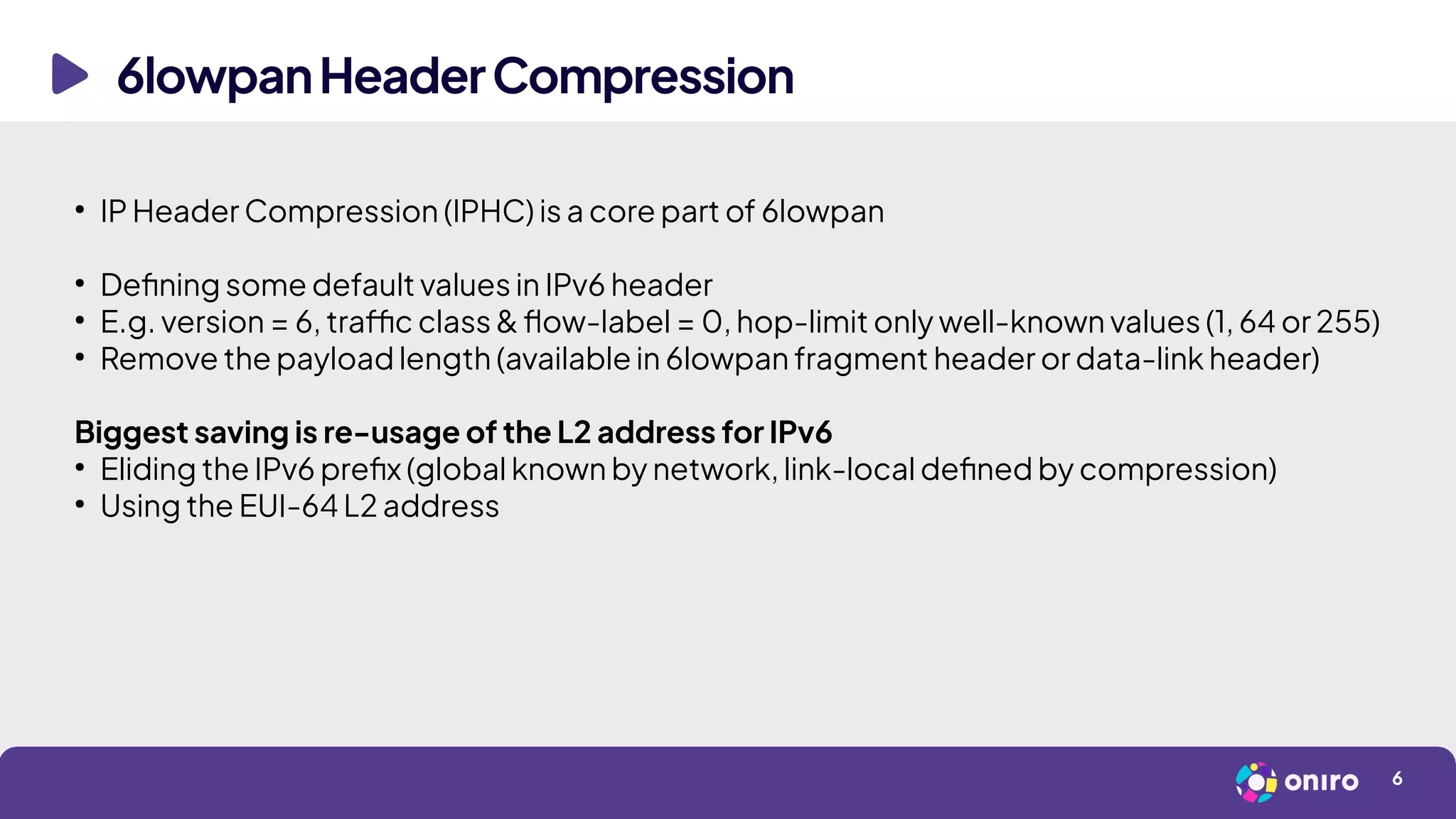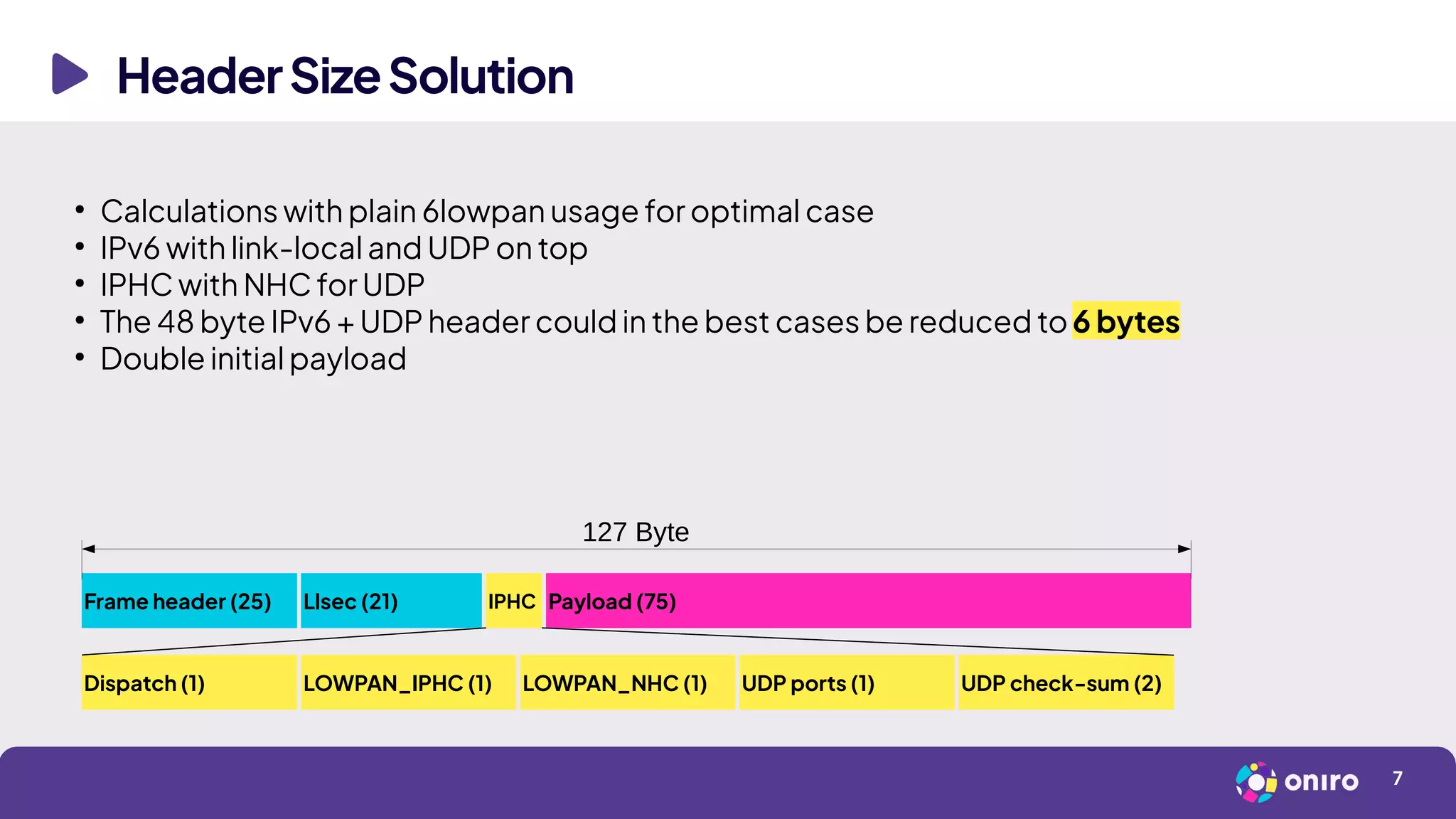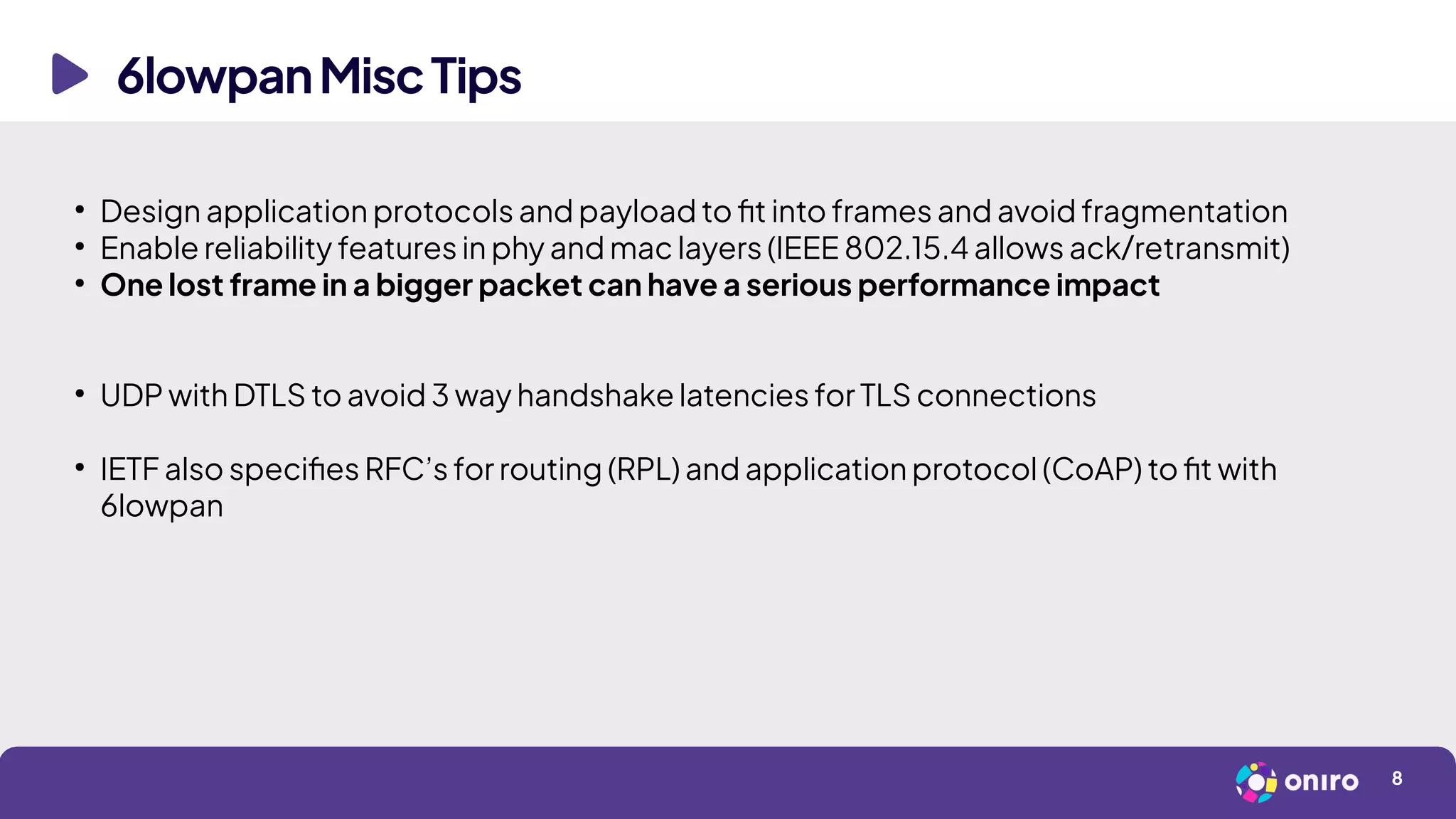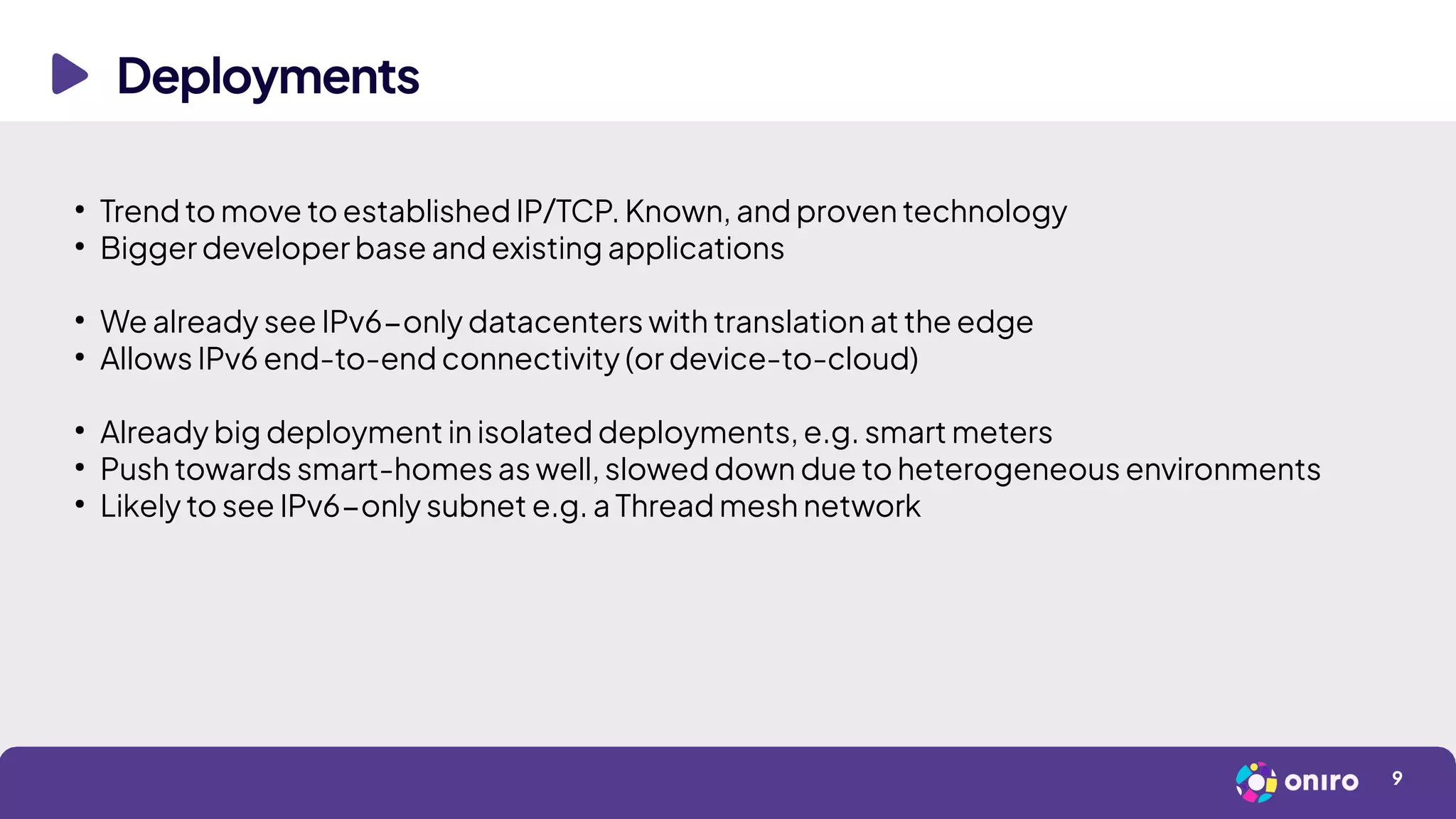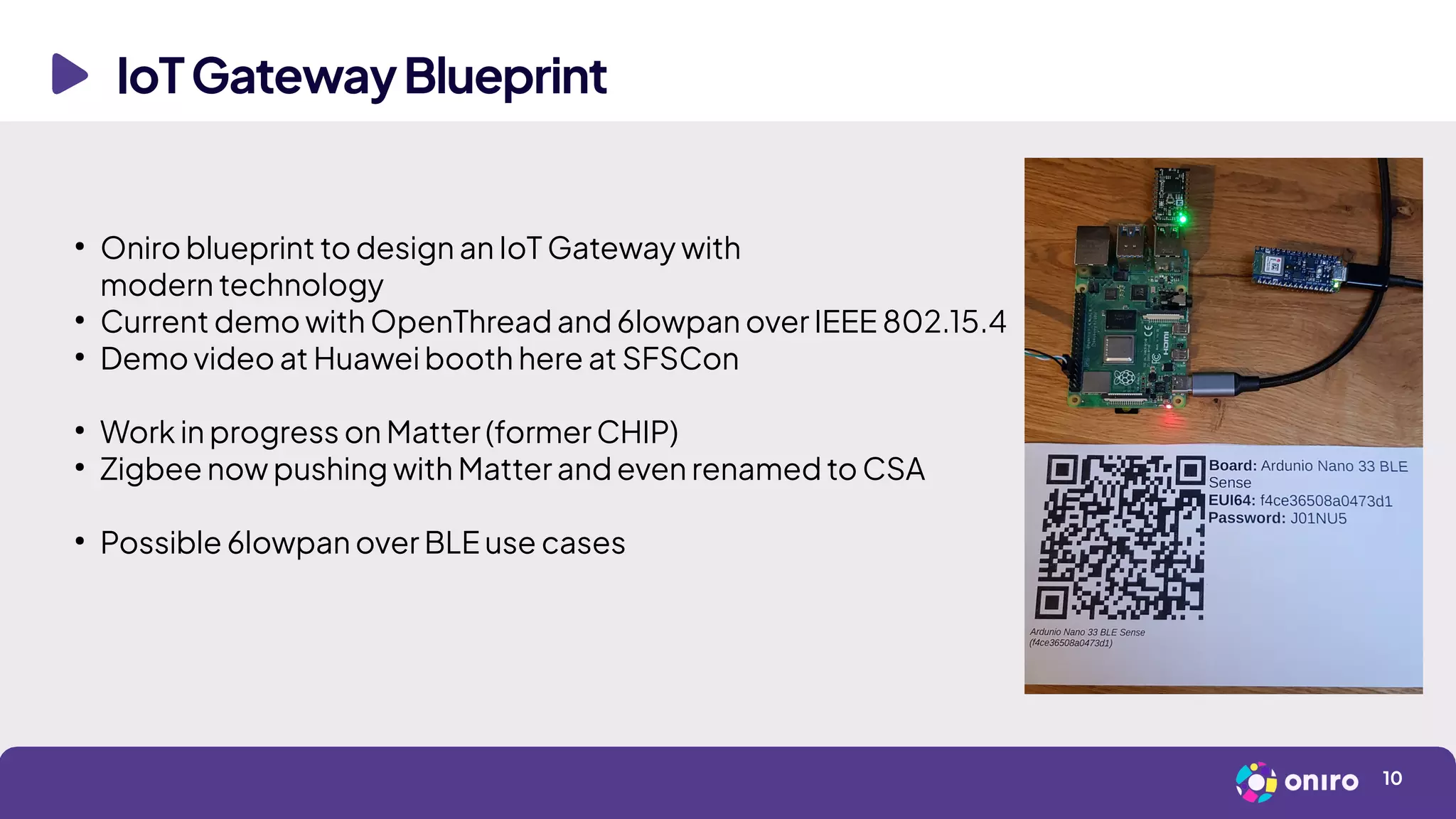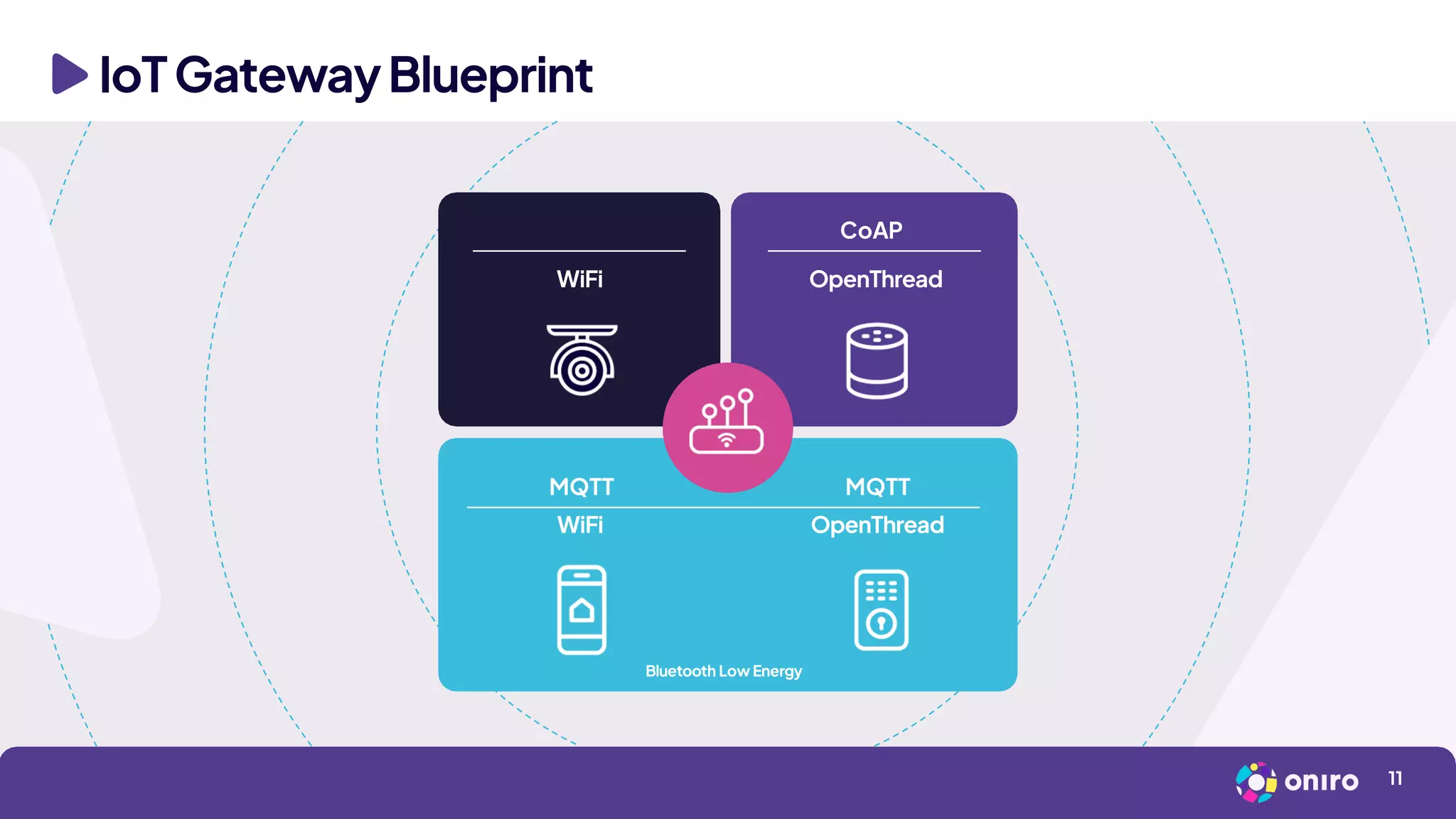The document discusses the evolution and implementation of IPv6 in IoT systems, particularly focusing on low-power and low-rate wireless technologies like IEEE 802.15.4. It highlights key mechanisms such as 6LoWPAN for header compression and issues related to packet size constraints in IoT environments. The emphasis is placed on the shift towards established IP/TCP protocols and the development of a modern IoT gateway blueprint using these technologies.
